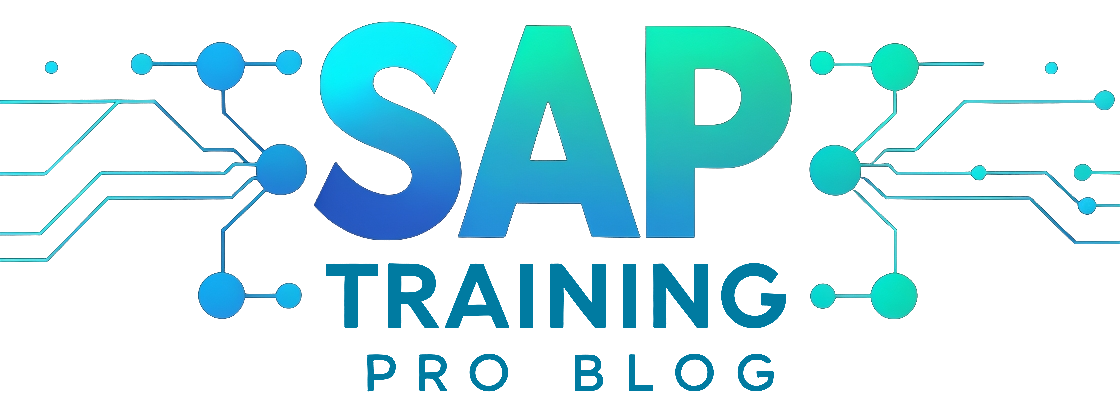Optimizing Support for a Smooth SAP Implementation

Optimizing Support for a Smooth SAP Implementation
Table Of Content
This article discusses strategies for optimizing support during the implementation of SAP, a popular enterprise resource planning software.
Implementing SAP can be a complex and challenging process, but with the right support strategies in place, organizations can ensure a smooth transition and maximize the benefits of this powerful software. To optimize support during the implementation, it is crucial to focus on building a strong support team, establishing effective communication channels, utilizing project management tools, implementing a knowledge base, utilizing remote support technologies, providing continuous training and education, and ensuring user adoption and satisfaction.
Building a strong support team is the foundation for a successful SAP implementation. This involves recruiting individuals with the necessary skills and expertise, providing them with proper training, and fostering a culture of collaboration and continuous learning. By having a dedicated and knowledgeable support team in place, organizations can effectively address any issues or challenges that may arise during the implementation process.
Effective communication is essential for a smooth SAP implementation. Organizations should establish clear and timely communication channels to ensure that all stakeholders are well-informed and can provide input when needed. This can include regular team meetings, email updates, project management software, and other collaboration tools. By fostering open and transparent communication, organizations can avoid misunderstandings and ensure that everyone is on the same page.
Building a Strong Support Team
Having a dedicated and knowledgeable support team is crucial for a successful SAP implementation. A strong support team ensures that any issues or challenges that arise during the implementation process can be addressed promptly and effectively. There are several key aspects to consider when building a support team for SAP implementation:
- Expertise: It is important to have team members who have a deep understanding of SAP and its functionalities. They should be well-versed in the technical aspects of the software and possess the necessary skills to troubleshoot and resolve any issues that may arise.
- Collaboration: Building a support team that works well together is essential. Team members should be able to collaborate effectively, share knowledge and insights, and work towards a common goal of ensuring a smooth implementation process.
- Training and Development: Continuous training and development opportunities should be provided to the support team to keep them updated with the latest SAP updates and new features. This ensures that they are equipped with the knowledge and skills required to provide effective support.
- Communication: Effective communication within the support team is crucial for a successful SAP implementation. Regular meetings, clear communication channels, and documentation of processes and procedures can help ensure that everyone is on the same page and working towards the same objectives.
By focusing on these key aspects, organizations can build a strong support team that is capable of handling the challenges and complexities of SAP implementation, ultimately leading to a successful and seamless transition to the new system.
Establishing Effective Communication Channels
Effective communication is essential for a smooth SAP implementation. Clear and timely information exchange is crucial for ensuring that all stakeholders are on the same page and can collaborate effectively. This section explores various communication channels that can be utilized to facilitate efficient communication throughout the implementation process.
One effective communication channel is face-to-face meetings. These meetings provide an opportunity for team members to discuss project updates, address any concerns or issues, and align their efforts. Additionally, face-to-face meetings allow for non-verbal cues and gestures, which can help convey information more effectively.
Another communication channel that can be utilized is email. Email allows for written documentation of conversations and can be easily referenced later. It also enables the sharing of files and attachments, making it convenient for providing updates or sharing important documents.
Additionally, project management tools such as collaboration platforms and messaging apps can be used to facilitate real-time communication and information sharing. These tools allow team members to communicate instantly, share files, and track progress, ensuring that everyone is informed and can work together efficiently.
Overall, establishing effective communication channels is crucial for a smooth SAP implementation. By utilizing various communication methods, teams can ensure clear and timely information exchange, leading to a successful implementation.
Utilizing Project Management Tools
Project management tools play a crucial role in optimizing support during SAP implementation. These tools provide a structured approach to track progress, manage tasks, and facilitate collaboration among team members. By utilizing project management tools, organizations can ensure that the implementation process remains on track and all tasks are completed in a timely manner.
One popular project management tool is Microsoft Project, which allows teams to create and manage project schedules, allocate resources, and track progress. This tool provides a visual representation of the project timeline and enables teams to identify any potential bottlenecks or delays.
Another useful tool is Trello, a web-based project management application that uses boards, lists, and cards to organize tasks and collaborate with team members. Trello allows teams to create customizable workflows, assign tasks to specific individuals, and track the status of each task.
In addition, Jira is widely used for agile project management. It allows teams to create and prioritize tasks, track issues, and collaborate on software development projects. Jira provides a comprehensive view of the project’s progress and enables teams to adapt and respond to changing requirements.
Overall, by leveraging project management tools like Microsoft Project, Trello, and Jira, organizations can streamline the SAP implementation process, improve task management, and enhance collaboration among team members.
Implementing a Knowledge Base
Creating a centralized knowledge base is a crucial step in optimizing support during SAP implementation. A knowledge base serves as a repository of relevant information that support teams can access quickly and efficiently. It eliminates the need for time-consuming searches and ensures that teams have the necessary information at their fingertips.
There are several benefits to implementing a knowledge base. Firstly, it enhances productivity by reducing the time spent on troubleshooting and problem-solving. Support teams can easily find solutions to common issues and provide timely assistance to users. Secondly, it promotes consistency in support by ensuring that all team members have access to the same information. This eliminates confusion and improves the overall quality of support provided. Finally, a knowledge base facilitates continuous learning and improvement. Support teams can document and share their experiences, enabling them to learn from past challenges and find innovative solutions.
To implement a knowledge base effectively, it is important to follow best practices. This includes organizing information in a logical and user-friendly manner, using tags and categories to facilitate searchability, and regularly updating and maintaining the knowledge base. Additionally, encouraging collaboration and feedback from support team members can further enhance the knowledge base’s effectiveness.
Utilizing Remote Support Technologies
Remote support technologies play a vital role in facilitating efficient assistance and troubleshooting for support teams during SAP implementation. These technologies enable support teams to provide remote support, eliminating the need for physical presence and allowing for quick and convenient problem-solving.
There are several remote support technologies that can be leveraged to enhance the support process. One such technology is remote desktop software, which allows support agents to remotely access and control users’ computers to diagnose and resolve issues. This not only saves time but also provides a seamless user experience.
Another technology that can be utilized is screen sharing software, which enables support agents to view and interact with users’ screens in real-time. This allows for effective communication and troubleshooting, as support agents can guide users step-by-step through the resolution process.
Additionally, remote support technologies such as virtual private networks (VPNs) can be employed to securely connect support teams with users’ systems. This ensures data privacy and enables support agents to access and resolve issues without compromising security.
In conclusion, by leveraging remote support technologies, support teams can provide efficient and effective assistance and troubleshooting remotely. These technologies enhance the support process, enabling quick problem-solving and improving overall user experience.
Providing Continuous Training and Education
Continuous training and education are vital for support teams to stay up-to-date with SAP updates and new features. Keeping support teams well-informed and equipped with the latest knowledge is crucial for providing effective assistance and troubleshooting during the implementation process.
In order to ensure continuous training and education, organizations can implement various strategies. One approach is to establish regular training sessions or workshops where support team members can learn about new features, updates, and best practices. These sessions can be conducted by experienced trainers or even by internal experts within the organization.
Another strategy is to provide access to online resources such as video tutorials, documentation, and forums. These resources can be easily accessed by support team members at their convenience, allowing them to learn at their own pace and refer back to the information whenever needed.
Furthermore, organizations can encourage support team members to participate in relevant conferences, webinars, and industry events. These events provide opportunities for networking, knowledge sharing, and staying updated with the latest trends and developments in SAP.
By implementing these strategies, organizations can ensure that their support teams are continuously trained and educated, enabling them to provide the best possible support during the SAP implementation process.
Ensuring User Adoption and Satisfaction
User adoption and satisfaction are crucial factors in determining the success of an SAP implementation. To achieve high levels of user adoption and satisfaction, organizations must take proactive measures to ensure user buy-in, provide comprehensive training, and offer ongoing support.
One approach to ensure user buy-in is to involve key stakeholders from the beginning of the implementation process. By including representatives from different departments and levels of the organization, you can gather valuable insights and address potential concerns early on. This collaborative approach fosters a sense of ownership and involvement, increasing the likelihood of user acceptance and adoption.
Comprehensive training is another essential aspect of ensuring user adoption and satisfaction. By providing training sessions tailored to different user roles and responsibilities, you can equip individuals with the necessary knowledge and skills to effectively utilize the SAP system. Additionally, offering ongoing training opportunities and resources keeps users up-to-date with the latest features and functionalities, maximizing their satisfaction and productivity.
Support plays a crucial role in maintaining user satisfaction throughout the SAP implementation journey. Establishing a dedicated support team that is readily available to address user queries and issues promotes confidence and trust in the system. Utilizing remote support technologies, such as screen-sharing and remote access tools, can also expedite troubleshooting and problem resolution, further enhancing user satisfaction.
In summary, ensuring user adoption and satisfaction requires a multi-faceted approach that includes user buy-in, comprehensive training, and ongoing support. By prioritizing these aspects, organizations can maximize the benefits of their SAP implementation and drive overall success.


